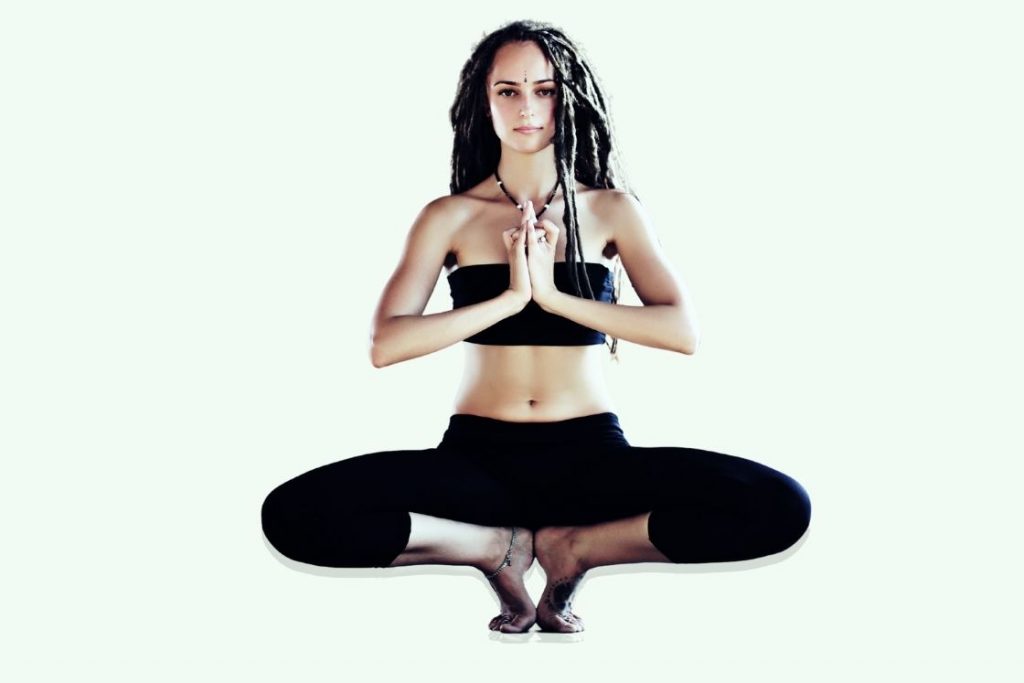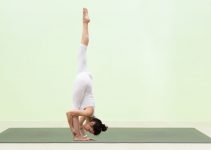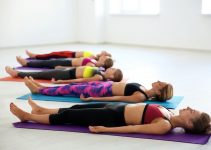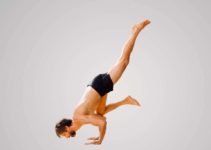
Gorakshasana is a seated balancing posture. Its an intermediate level yogic posture generally practiced for meditation. It is also known by the names of Goraknath pose or Cowherd pose.
In Gorakshasana, the entire body weight balances on the feet, therefore the practitioner needs an appropriate amount of flexibility in the lower legs and feet.
Gorakshanasana helps the yogis to improve their posture. Regularly practicing the asana inculcates a habit of sitting straight and benefits the spine and lower back.
Etymology
The term Gorakshasana is composed of three Sanskrit words. Here, ‘go’ refers to ‘cow’, ‘raksha’ means ‘protector’, and ‘asana’ is ‘pose.’ The pose is preferred for meditation. Its name is associated with Lord Shiva, as he is called the lord of cattle as well as lord of meditation.
Yogic texts also reveal that it has been named after the great Yogi Goraksanath, the founder of the Nath yoga tradition. He used to meditate in this posture. According to him, it is beneficial to raise the intellectual level.
It is practiced sitting with bent knees and joined heels. The body is then balanced on the feet. It exerts pressure on the muscles of the ankle and feet and makes them flexible. It also stimulates the sacral chakra and enhances sexual energy.
Gorakshasana Practice Guide

Gorakshasana procedure is described in medieval hatha yoga texts like Hatha yoga pradipika and Gheranda Samhita. It’s one of 32 asanas of Gheranda Samhita and master Gheranda mentioned this pose as;
Turn both feet upwards between knees and thighs. Hide the ankles with hands turned upwards. Contract throat and keep the eyesight on the tip of the nose. This is Gorakshasana.
Gheranda Samhita
Precautions & Contraindications
- Do not hunchback while holding the pose.
- While going into the pose and holding cowherd pose, the shoulders should be relaxed.
- Avoid practicing gorakshasana if there is an issue with feet and leg joints.
- If you are suffering from knee pain, then do not practice this asana.
- People with sciatica and other lower spinal pain should not practice gorakshasana.
Preparatory poses
- Staff Pose (Dandasana)
- Easy pose (Sukhasana)
- Bound angle pose (Baddha konasana)
- Accomplished pose (Muktasana)
Gorakshasana Steps
- Sit on the floor in padmasana.
- Stretching the arms forward place them on the floor.
- Raise your trunk and lift the hips off the floor.
- Keeping the trunk stretched straight stand with your knees.
- Stretch your thighs and gradually lift the hands off the floor one-by-one.
- Maintain the balance and integrity of the spine.
- Join your hands in prayer position in front of your chest.
- Stay in the position as long as you can hold it comfortably.
- Now, place your hands on the floor and bring your hips to the floor.
- Release your legs and now change the leg position.
- Repeat it for the same duration.
Follow-up poses
After gorakshasna, one should practice pranayama as well as any Mudra as complementary asana.
Modification and Props
- Beginners can perform Gorakshasana by keeping the feet in baddha konasana, with joined heels. Place them horizontally under the perineum and then sitting on the feet.
- Against a wall – For providing support and maintaining balance the pose is performed against a wall. Take the support only from the back while holding the pose.
- Yoga Blocks – Place the yoga blocks vertically in front of you. When you stand on your knees maintaining the padmasana you can keep your feet on the blocks.
Variations
- Once the balance is maintained the joined hands can be raised overhead. This stretches the spine and makes the pose a little bit advanced.
- Bhadrasana- In this variation the feet are joined by bringing the heels together near the perineum. The hips are lifted off the ground and the practitioner sits on top of the feet. The hands are placed on the feet.
Gorakshasana Benefits
1. Improves balance
In Gorakshasana, as the body is entirely balanced on the knees, the posture is all about maintaining the integrity of the body. Keeping the spine and thighs straight with the folded feet this asana provides a sense of balance.
2. Enhances tailbone flexibility
The full Gorakshasana pose involves stretching of the tailbone. It enhances its elasticity and makes it more flexible. Moreover, it assists in walking, running, and in the defecation process. It also benefits the pelvic muscles.
3. Strengthens leg muscles
Goraksasana provides flexibility to leg muscles by stretching them intensely. It also improves the elasticity and strength of the leg joints. It provides toned and stronger legs.
4. Activates kundalini
Goraksasana stimulates the kundalini and aids in its awakening. It spreads the energy throughout the body chakras and halts the aging process. This makes the practitioner energetic and relaxes the mind. This also improves concentration and brings a sense of complete awareness.
5. Stimulates sexual energy
This asana tones the reproductive organs and improves their functioning. This activates the sexual organs and maintains sexual health.
6. Better digestion
Gorakshasana exercises the abdominal organs by improving the blood flow to the lower abdomen. This benefits the digestive organs. It has therapeutic action against Irritable Bowel Syndrome (IBS), and gastritis.
Conclusion
Practicing gorakshasana is beneficial in numerous ways. Along with providing the above-mentioned benefits, all the benefits associated with padmasana are also accessible through its practice.
Try the pose to gain health benefits in abundance.




